
Passalidae is a family of beetles known variously as "bessbugs", "bess beetles", "betsy beetles", "betsy bugs", or "horned passalus beetles". Nearly all of the 500-odd species are tropical; species found in North America are notable for their size, ranging from 20 to 43 mm, for having a single "horn" on the head, and for a form of social behavior unusual among beetles.

Velvet water bugs are members of the family Hebridae. They are semiaquatic insects that live among moss or ponds with an abundance of vegetation, in which they prey on small arthropods. Velvet water bugs are the smallest of the Gerromorpha, and have an appearance of tiny veliids. Hebrids sometimes move across water surfaces, but walk or run rather than skate or scull on the surface.

The suiriri flycatcher is a species of bird in subfamily Elaeniinae of family Tyrannidae, the tyrant flycatchers. It is found in Argentina, Bolivia, Brazil, Paraguay, Suriname, and Uruguay.
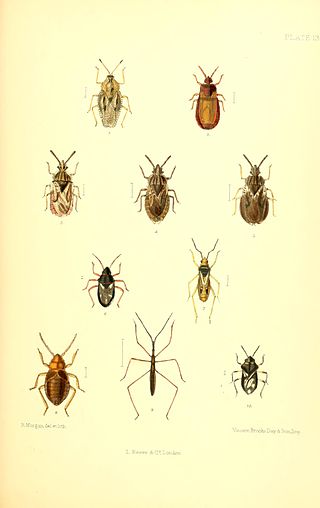
Hebrus pusillus is a true bug. The species is found in the Palearctic. It ranges from Europe and North Africa to Asia Minor, then east to Kirgizia. Hebrus pusillus is a tiny semi-aquatic bug which lives in wet places, such as small lakes, heath and fen ponds, often at the shore amongst dense vegetation or in Lemna or Sphagnum. In Denmark, England, Germany and Sweden it is univoltine.

Hebrus is a genus of velvet water bugs in the family Hebridae. There are at least 160 described species in Hebrus.

Ozophora is a genus of dirt-colored seed bugs in the family Rhyparochromidae. There are more than 100 described species in Ozophora.
Ozophora burmeisteri is a species of dirt-colored seed bug in the family Rhyparochromidae. It is found in Central America and North America.
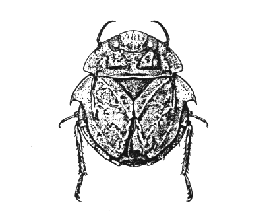
Limnocoris is a genus of creeping water bugs in the family Naucoridae. There are more than 70 described species in Limnocoris.
Labops is a genus of plant bugs in the family Miridae. There are about 13 described species in Labops.
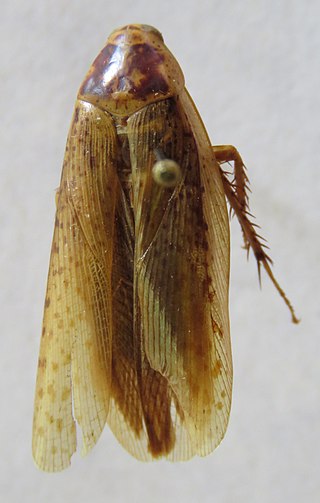
Epilampra is a genus of cockroach in the family Blaberidae. There are more than 70 described species in the genus Epilampra.
Labops burmeisteri is a species of plant bug in the family Miridae. It is found in Europe and Northern Asia and North America.
Aradus implanus is a species of flat bug in the family Aradidae. It is found in North America.

Geocoris punctipes, the big-eye bug, is a species of big-eyed bug in the family Geocoridae. It is found in the Caribbean, Central America, North America, Oceania, and South America.
Hebrus buenoi, or Bueno's velvet water bug, is a species of velvet water bug in the family Hebridae. It is found in Central America and North America.
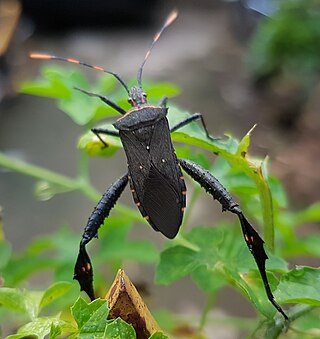
Leptoglossus gonagra, known as the passionvine bug, citron bug or squash bug in different parts of its range, is a species of leaf-footed bug in the family Coreidae. It is found in Africa, the Caribbean, Central America, North America, South America, Southern Asia, the Pacific Ocean and Oceania.
Irbisia solani is a species of plant bug in the family Miridae. It is found in North America.
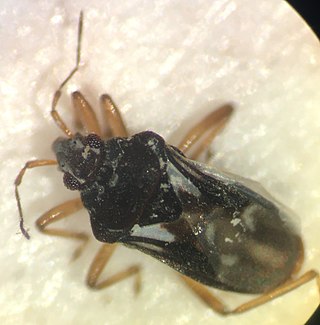
Hebrus consolidus is a species of velvet water bug in the family Hebridae. It is found in the Caribbean Sea, Central America, and North America.
Canopus is a genus of Neotropical bugs with about six species that form the family Canopidae. Bugs in the family Canopidae are small and have a convex lady-bird beetle like shape and are thought to be fungus feeders. The scutellum completely covers the abdomen and wings. The antennae are five segmented.










